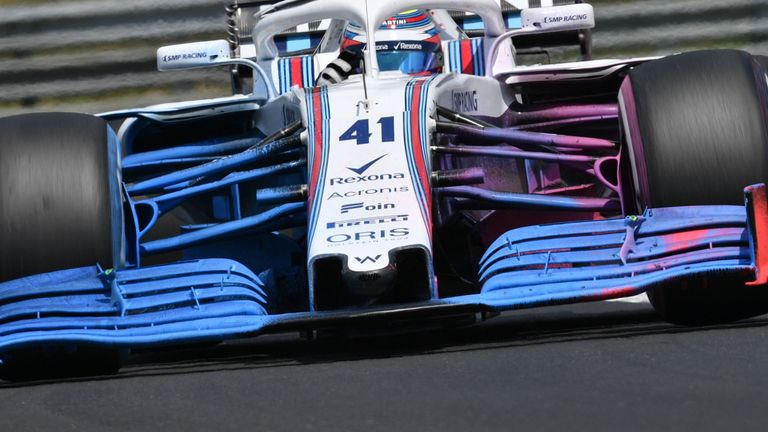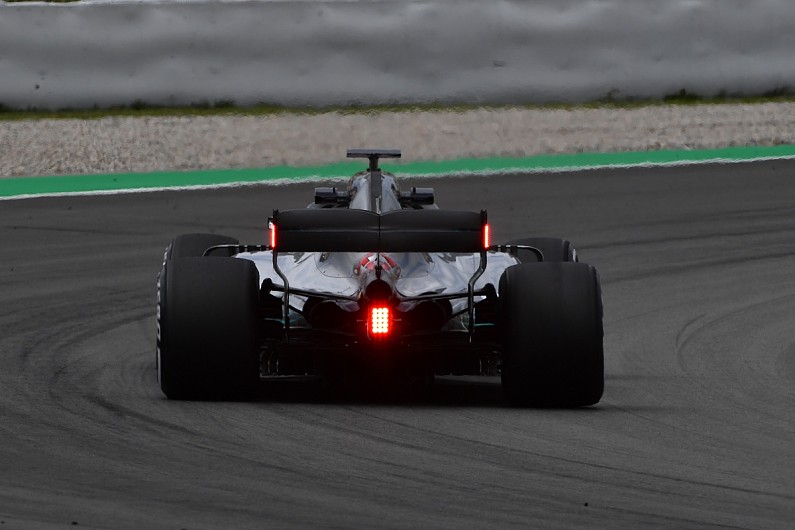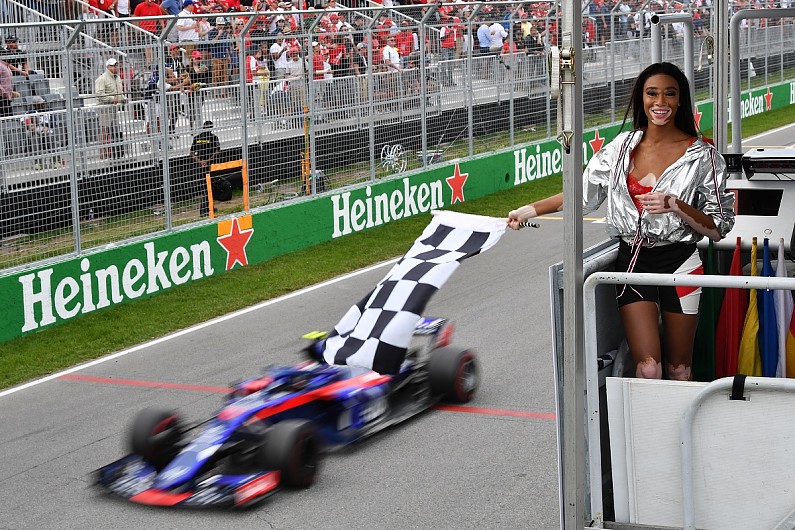The 2018 F1 season is now almost a distant memory. This time last year, we were all foaming at the mouth over the introduction of the halo (myself included to a certain extent). I think we can all agree that the halo is here to stay. It proved it's worth at the 2018 Belgian GP and to be totally honest, it doesn't actually look that bad. Looking back, it's now a bit strange seeing a car without a halo. Anyway, with all that scandal behind us, we look ahead to the 2019 season. OH BOY, MORE CONTROVERSY!!! We're seeing tweaks to both the technical and safety regulations this year with FOM hoping that they improve the spectacle for this year. In this article, I'll be going through each and every change for the 2019 season to hopefully make you more aware of what's around the corner. You can come to your own conclusion about whether the technical changes, in particular, will improve the racing, Let's begin
Aerodynamic Changes:
Just like in 2017, we're seeing changes to the aero of the cars. While the 2017/2018 cars were some of the most aerodynamically complex cars we've ever seen in the sport, we saw a lot of incidents where one car couldn't get close to the back of another car because of the "Dirty air" effect. "Dirty air" is the disturbed air that comes of the back of the car in front. This disturbed air cuts the aerodynamic efficiency of the car following significantly. The 2019 aero regs hope to solve the issue of cars being unable to get close to one another. This, in theory, should also promote more overtaking. For starters, the front wing has been widened to 200mm, increased in height by 20mm and moved forward by 25mm. On top of this, the days of complex endplates are gone as they have been banned for the 2019 season. The use of more simplified endplates means more direct downforce generation. The height of the front wing, according to F1, ".... further enhances its power and make it less sensitive to stall - so drivers are less likely to suddenly lose front-end grip when they close up on another car". During 2018, teams utilised many so-called "Front wing Strakes" located on the underside of the front wing. This created a lot of aerodynamic disturbance which affected the car following. These strakes have now been limited to just 2 meaning, hopefully, less "dirty air" for the car behind
We now move the bargeboard area which was the sight of many awesome and crazy aerodynamic designs over the course of the 2018 season. These new bargeboards for 2019 will be decreased in height by 150mm and moved forward by 100mm. This is in an effort to allow the air from the front wing to reach the bargeboard easier. This, in theory, should also decrease the amount of disturbed air coming off the back of the car making it easier for the following car to get close.
The rear wing for this year is also being altered. As if they rear wings weren't big enough already, they're getting even bigger! The height of the front wing is being increased by a further 20mm and widened by 100mm. The increased height of the wing will deflect air upwards, away from the trailing car whilst the widening of the wing will create a bigger hole in the air meaning a better slipstream effect for the car behind. The DRS opening has also been increased by 20mm which should make it even more effective.
Finally, in the aero department, restrictions have been placed on the design of the brake ducts. A lot of focus was put on this area in 2018 with plenty of complex designs appearing. Now, there is less surface area for the engineers to exploit which should result in less aerodynamic disturbance for the car behind.
Simplified Tyre Colours:
In order to appeal to the more casual viewers and viewers who are new to the sport, the colours of the tyres have been revised. Admittedly, if I had started watching F1 in 2018 and tried to work out the names of the compounds, I'd be lost. For this year, each Grand Prix will only have 3 compounds of tyre. White denoting hard, yellow denoting medium and red denoting soft. The actual compounds used will change depending on the circuit. The compounds will range from C1(Hardest) to C5(Softest). For example, at Monaco, they may use C5, C4, and C3 which would have been the Hypersoft, Ultrasoft, and Supersoft in 2018 but they will simply be called the soft, medium and hard in 2019 making it easier for the fans to follow the strategy of the race.
Biometric Gloves:
These sound like something out of cheesy 70's science fiction movie to be honest. However, they are a serious piece of technology which is being implemented to improve the medical treatment given trackside. The gloves contain sensors which are stitched into the fabric of the gloves which give crucial information on the driver's pulse and oxygen levels in the blood; information which could prove vital in a post-crash scenario.
Rear Endplate Rain Lights:
Two new rain lights have been added to the rear wing to improve the visibility of the cars in wet conditions. Just like the central rain light, these have to be on while running inters or wets. I must admit, they do look cool.
Increased Race Fuel Allowance
The fuel allowance for a race has been increased from 105kg to 110kg. This extra fuel should mean that fuel saving will be unnecessary and drivers can push flat out at all times. Personally, I don't think this will make any difference. There is little to no fuel saving going on anyway. The issue is the number of engines which are allowed per season. Teams go conservative in order to preserve the engine components, not to save fuel. If the engine allowance was increased we could potentially see drivers push harder for longer
New Helmets:
New helmet regulations have been introduced for 2019 which essentially means that these helmets are now completely bulletproof. The front visor has been lowered by 10mm to protect from any potential damage caused by debris
Car & Driver Weight:
The weight of the driver will now be considered separate from the car weight, meaning taller and heavier drivers will not be at a disadvantage anymore (we're looking at you Hulkie). Since the fuel load is increased, the weight of the car without a driver, equipment, and seat have to be accommodated.
Self-Scrutineering:
We as viewers won't see too much of this but this regulation states that instead of the cars being scrutineered before a GP,teams must instead sign a declaration saying that they are in compliance with the rules. Random checks can be carried out at any time.
New end of race board:
As is tradition, the chequered flag will still be waved at the end of the race but now an electronic board, the ones used to display yellow flags, SCs etc will be used to display a chequered flag symbol at the end of the race. F1 haven't actually said why they're doing this but I have a sneaky suspicion that it's something to do with what happened in Canada 2018 where the flag was waved a lap early!
New Post Safety Car Restart Rule:
This one is quite interesting. This rule states that after a safety car restart, cars will not be allowed to overtake until the leader has crossed the start/finish line as opposed to crossing the safety car line. Again, no reason was given as to why.
All in all, the rules and regs for 2019 attempt to make things simpler for the viewer while also attempting to improve the spectacle. Will the aero regs actually change anything? There is still an air of uncertainty surrounding it but all we can do is wait until that first race on the 17th of March to find out.
Aerodynamic Changes:
Just like in 2017, we're seeing changes to the aero of the cars. While the 2017/2018 cars were some of the most aerodynamically complex cars we've ever seen in the sport, we saw a lot of incidents where one car couldn't get close to the back of another car because of the "Dirty air" effect. "Dirty air" is the disturbed air that comes of the back of the car in front. This disturbed air cuts the aerodynamic efficiency of the car following significantly. The 2019 aero regs hope to solve the issue of cars being unable to get close to one another. This, in theory, should also promote more overtaking. For starters, the front wing has been widened to 200mm, increased in height by 20mm and moved forward by 25mm. On top of this, the days of complex endplates are gone as they have been banned for the 2019 season. The use of more simplified endplates means more direct downforce generation. The height of the front wing, according to F1, ".... further enhances its power and make it less sensitive to stall - so drivers are less likely to suddenly lose front-end grip when they close up on another car". During 2018, teams utilised many so-called "Front wing Strakes" located on the underside of the front wing. This created a lot of aerodynamic disturbance which affected the car following. These strakes have now been limited to just 2 meaning, hopefully, less "dirty air" for the car behind
We now move the bargeboard area which was the sight of many awesome and crazy aerodynamic designs over the course of the 2018 season. These new bargeboards for 2019 will be decreased in height by 150mm and moved forward by 100mm. This is in an effort to allow the air from the front wing to reach the bargeboard easier. This, in theory, should also decrease the amount of disturbed air coming off the back of the car making it easier for the following car to get close.
The rear wing for this year is also being altered. As if they rear wings weren't big enough already, they're getting even bigger! The height of the front wing is being increased by a further 20mm and widened by 100mm. The increased height of the wing will deflect air upwards, away from the trailing car whilst the widening of the wing will create a bigger hole in the air meaning a better slipstream effect for the car behind. The DRS opening has also been increased by 20mm which should make it even more effective.
Finally, in the aero department, restrictions have been placed on the design of the brake ducts. A lot of focus was put on this area in 2018 with plenty of complex designs appearing. Now, there is less surface area for the engineers to exploit which should result in less aerodynamic disturbance for the car behind.
Simplified Tyre Colours:
In order to appeal to the more casual viewers and viewers who are new to the sport, the colours of the tyres have been revised. Admittedly, if I had started watching F1 in 2018 and tried to work out the names of the compounds, I'd be lost. For this year, each Grand Prix will only have 3 compounds of tyre. White denoting hard, yellow denoting medium and red denoting soft. The actual compounds used will change depending on the circuit. The compounds will range from C1(Hardest) to C5(Softest). For example, at Monaco, they may use C5, C4, and C3 which would have been the Hypersoft, Ultrasoft, and Supersoft in 2018 but they will simply be called the soft, medium and hard in 2019 making it easier for the fans to follow the strategy of the race.
Biometric Gloves:
These sound like something out of cheesy 70's science fiction movie to be honest. However, they are a serious piece of technology which is being implemented to improve the medical treatment given trackside. The gloves contain sensors which are stitched into the fabric of the gloves which give crucial information on the driver's pulse and oxygen levels in the blood; information which could prove vital in a post-crash scenario.
Rear Endplate Rain Lights:
Two new rain lights have been added to the rear wing to improve the visibility of the cars in wet conditions. Just like the central rain light, these have to be on while running inters or wets. I must admit, they do look cool.
Increased Race Fuel Allowance
The fuel allowance for a race has been increased from 105kg to 110kg. This extra fuel should mean that fuel saving will be unnecessary and drivers can push flat out at all times. Personally, I don't think this will make any difference. There is little to no fuel saving going on anyway. The issue is the number of engines which are allowed per season. Teams go conservative in order to preserve the engine components, not to save fuel. If the engine allowance was increased we could potentially see drivers push harder for longer
New Helmets:
New helmet regulations have been introduced for 2019 which essentially means that these helmets are now completely bulletproof. The front visor has been lowered by 10mm to protect from any potential damage caused by debris
Car & Driver Weight:
The weight of the driver will now be considered separate from the car weight, meaning taller and heavier drivers will not be at a disadvantage anymore (we're looking at you Hulkie). Since the fuel load is increased, the weight of the car without a driver, equipment, and seat have to be accommodated.
Self-Scrutineering:
We as viewers won't see too much of this but this regulation states that instead of the cars being scrutineered before a GP,teams must instead sign a declaration saying that they are in compliance with the rules. Random checks can be carried out at any time.
New end of race board:
As is tradition, the chequered flag will still be waved at the end of the race but now an electronic board, the ones used to display yellow flags, SCs etc will be used to display a chequered flag symbol at the end of the race. F1 haven't actually said why they're doing this but I have a sneaky suspicion that it's something to do with what happened in Canada 2018 where the flag was waved a lap early!
New Post Safety Car Restart Rule:
This one is quite interesting. This rule states that after a safety car restart, cars will not be allowed to overtake until the leader has crossed the start/finish line as opposed to crossing the safety car line. Again, no reason was given as to why.
All in all, the rules and regs for 2019 attempt to make things simpler for the viewer while also attempting to improve the spectacle. Will the aero regs actually change anything? There is still an air of uncertainty surrounding it but all we can do is wait until that first race on the 17th of March to find out.






Comments
Post a Comment